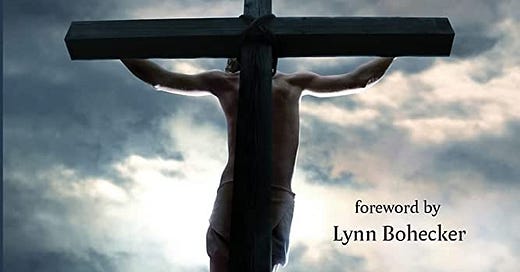The Back Side of the Cross: An Atonement Theology for the Abused and the Abandoned
Content warning: Brief mentions of abuse in this post
I am part of SpeakEasy, which provides complimentary books in exchange for candid book reviews.
Making sense of the cross is one of the most important theological tasks that Christians undertake. “How does one make sense of such a brutal and violent death? What possible salvific purpose could it have?” Throughout Christian history, the emphasis on understanding the cross has often been on, “How does it bring salvation and forgiveness to sinners?”
Dr. Diane Leclerc and Dr. Brent Peterson, point out that most formulations of atonement theology focus so much on sinners and the ones causing harm, that those who have been harmed/victimized are often forgotten. The authors do not deny the importance of the cross and forgiveness to sinners/those who have caused harm, but they challenge Christians to expand their understanding of the cross to focus on those who have been harmed/sinned against.
The neglect of the sinned against in traditional understandings of atonement theology has caused massive harm: it has led to cheap understandings of forgiveness, in which those who have been on the receiving end of harm are often pressured to simply forgive perpetrators of harm regardless of whether or not repentance has occurred. Additionally, this overemphasis on the sinner/one causing harm has led to the needs of those who have suffered violence, abuse, etc to be ignored. They not only have to undergo traumatic experiences but they are often silenced.
The Back Side of the Cross argues for theologies of the cross that uplift the voices, experiences, and healing of those who have been harmed. Using lament, the concept of han, aspects of liberation theology, and protest theology, Leclerc and Peterson have written a book that is a must-read for pastors, soon-to-be pastors, theology students, lay leaders, and those who have been abused and harmed.
In the Back Side of the Cross, the authors explore theodicy, critiques of traditional atonement theologies as well as possibilities for how they can be interpreted in ways that are lifegiving for those who have been harmed, the violence of the cross, forgiveness, and the sexual abuse of Jesus. While all of the topics highlighted deserve to be discussed in depth, for this review I want to focus in particular on chapters 3 and 8.
Chapter 3: Toward Saving the Conventional Cross provides an overview and critique of various forms of atonement theologies. These critiques are not unique. For example, various forms of feminist and liberation theologies have critiqued substitutionary and satisfaction atonement theories’ emphasis on retributive violence. What is unique about this chapter is that after critiquing the various atonement theories the authors ask themselves, “Are there aspects of these theories that can be transformed so that they can bring good news to the abused?”
For instance, when discussing substitutionary atonement the authors ask, “What if Jesus could stand in for the sinner (not the victim, here) in another sense? What if the crucified Jesus, who in a sense has experienced the sin of the abuser taking it in, could offer a substitutionary apology to the victim.” (48).
Now to be sure, one may not necessarily agree with the authors’ specific conclusions and reinterpretations of traditional atonement theories, but the fact that they are bringing up these questions and challenging Christians to interpret the cross in ways that bring the abused and harmed to the forefront is vitally important.
Chapter 8: Forgiving God, is another must-read chapter. Too often Christian attempts to explain away suffering often depend on defending God. I am going to be blunt, many of these defenses, particularly for those who have been harmed are at best inadequate and at worst patronizing. As someone who grew up in an emotionally abusive and neglectful household many of the reasons used to explain away God’s inaction are insulting.
For example, the idea that God allowed the abuse to happen because my mother’s free will took precedence over my need for stability and care as a child, is downright insulting. So I appreciate this chapter for its willingness to bring up the idea that blaming God is a valid response on the part of those who have been harmed. And the notion of forgiving God is one that can potentially turn one’s theological worldview upside down.
My only critique of this book is that the second part of the book: pastoral resources, was not as fully developed as the first half and felt a bit rushed. But there are still some gems in that section such as the idea of congregational lament.
I cannot recommend this book enough for anyone that cares deeply about theology and for those who have been abused and harmed or who have experienced said abuse One may not always come to the same conclusions as the authors (I like process theology very much, thank you) but it challenges Christians across the theological spectrum to take seriously what the cross says for those who have been abused. This will be a book that I reference for years to come.



